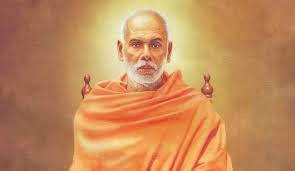Sant Narayana Guru
24 Jun 2021 16:29:28

Nick Name: Nanu
Birthday: August 20, 1856
Died At Age: 72
Sun Sign: Leo
Also Known As: Shree Narayana Guru Swami
Born Country: India
Born In: Chempazhanthy, Thiruvananthapuram, India
Famous As: Spiritual Leader, Social Reformer
Narayana Guru, also known as Shree Narayana Guru Swami, was a spiritual leader, saint and social reformer from Kerala, India. He belonged to the Ezhava community considered as 'Avarna' or belonging to the lower caste. He was a social reformer and led a movement to end the injustices prevalent in the Hindu caste-ridden society in Kerala. He believed in spiritualism, social equality, freedom, and brotherhood. He dedicated his entire life to promoting spiritual enlightenment. He is venerated as a saint and “Guru” for his profound Vedic knowledge, poetic excellence, and his teachings of tolerance and non-violence, which impacted a large population in India as well as abroad. He was instrumental in laying the groundwork for social and spiritual reform in Kerala. He believed that spiritual and social growth could be attained by education and establishment of learning centers. Thus, he built several temples, schools, and education centers for the underprivileged. He dismissed the 'Chaturvarna' and the beliefs attached to it. Many years after his death, he was commemorated on an Indian postage stamp by the Indian government. The Sri Lankan government also issued a commemorative stamp in his honor.
Childhood & Early Life
Narayana Guru, lovingly known as 'Nanu,' was born on August 28, 1855, in Chempazhanthy near Thiruvananthapuram, Kerala. His father, Madan Asan, was a farmer from the Ezhava community, and his mother was Kuttiyamma.
He was educated in the traditional gurukul system under the tutelage of Chempazhanthi Mootha Pillai. His mother passed away when he was only 15 years old.
At the age of 21, he traveled to Travancore (modern-day Thiruvananthapuram) to learn from the Sanskrit scholar Raman Pillai Asan, who belonged to the Puthuppally Varanappally family. From him, Narayana Guru learned the Vedas, the Upanishads, literature, and logic rhetoric in Sanskrit.
In 1881, he abandoned his studies and returned to his village owing to his father's ill health. He also set up a small village school to educate local children, where he was known as "Nanu Asan."
Social Reformer
Narayana Guru left his village and home to begin his life as a spiritual wanderer. He traveled extensively through Kerala and Tamil Nadu. It was during his journeys that he became associated with the social and religious reformer Chattampi Swamikal, who, in turn, introduced Guru to Ayyavu Swamikal, who taught him meditation and yoga.
After years of traveling, he set up a sanctuary at Pillathadam cave at Maruthwamala and remained there for eight years, meditating and practicing yoga.
In 1888, he went to Aruvippuram, where he meditated and took a rock from the river and sanctified it as a Shiva idol, which is now known as the Aruvippuram Shiva Temple.
Since Guru belonged to a lower caste, the upper caste Brahmins questioned the act of him performing the consecration known as "Aruvipuram Pratishta," and his right to consecrate the Shiva idol.
On May 15, 1903, he, along with Padmanabhan Palpu, founded the 'Sree Narayana Dharma Paripalana Yogam' (SNDP) that worked towards the spiritual upliftment and education of the underprivileged Ezhava community.
In 1904, Guru moved to Sivagiri, near Varkala, and established a school for children from the lower sections of the society who were often discriminated against and segregated.
In 1912, he built the Sarada Mutt in Sivagiri. He also established several temples in Thrissur, Kozhikode, Anchuthengu, Kannur, Mangalore, and Thalassery and even traveled to Sri Lanka in 1926.
He initiated several activities, including the Sivagiri pilgrimage organized after his visit to Pallathuruthy in 1927.
Fight Against Casteism
During the 19th and early 20th centuries, casteism was the order of the day in the Indian society. People from lower castes like the Thiyyas and Ezhavas and the untouchable castes like Pulayars, Paraiyars and tribals suffered at the hands of the Brahmins.
Even Guru wasn't spared of these atrocities, and hence as his first act of protest, he erected the Siva idol at Aruvippuram in 1888. He built over forty-five temples in Kerala and Tamil Nadu.
He even sanctified several non-traditional objects like a slab with the inscriptions “Truth, Ethics, Compassion,” a vegetarian Shiva, a mirror, and also a sculpture made by an Italian artist.
He preached about living with compassion and tolerance for each other. One of his significant works, the "Anukampadasakam," praises the teachings of The Buddha, Krishna, Jesus Christ, and Adi Shankara.